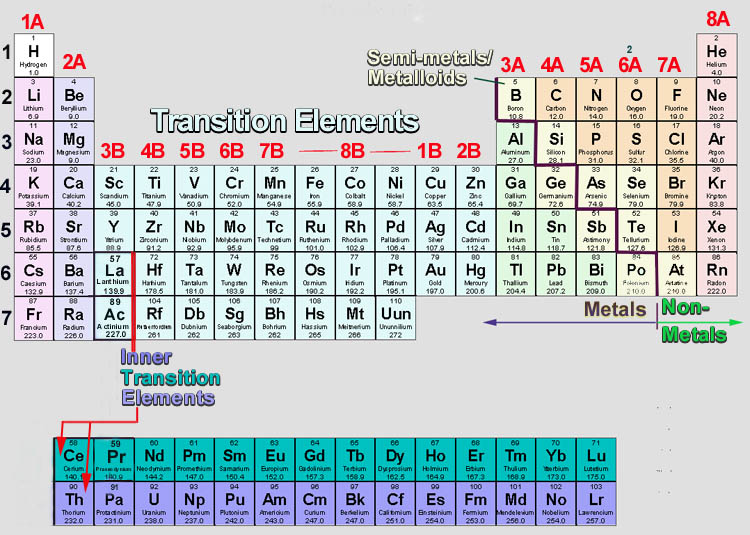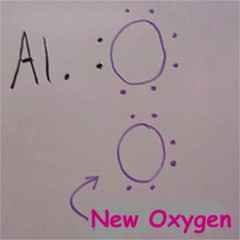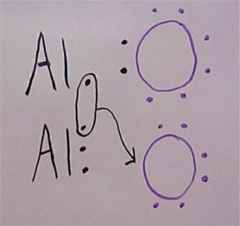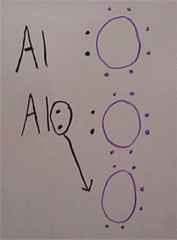
|
 |

|

|
|

|
|
Thank Yous
(coming Soon!)
|
|
#7 - Ionic BondingRemember the octet rule that atoms strive to be in low energy? and that the best way is by bonding with another element? Well keep that in mind as you try to form your very first chemical bonds. The first thing to do is to remember how many electrons each atom has in it�s outer shell. This can be easily figured out by just looking at the periodic table
 Notice each group. The vertically arranged elements have the same amount of electrons in their outer shell. Here�s a table to help you:
In ionic bonding, with the variations in number of electrons, only certain numbers of a certain 2 elements can combine where every atom is following the octet rule. It�s your job to determine how many. For example, find the chemical formula when sodium(Na) and chlorine(Cl) are mixed.
Sodium has one outer electron
Chlorine has seven outer electrons
All chlorine needs to achieve 8(which is good) is to get one extra electron from Na.
They then suddenly bond NaCl This is a chemical formula.
Here�s another, harder example: bond aluminum(Al) and oxygen(O). Hmmm...
Aluminum has 3 outer electrons
oxygen has 6 outer electrons
Oxygen needs 2 electrons to get to 8,
But, what if we use a second oxygen that also needs two electrons to get to 8?
This also causes a problem because there�s only one electron going around,
Oh wait, there�s 2 more unused electrons left, why don�t we add another oxygen who needs exactly 2 to take!
Now lets add up the number of atoms used: 2 aluminum(Al) and 3 oxygen(O) atoms used The number of times used is put in subscript right after the symbol Al2O3
This is a chemical equation!
- Here�s another cool thing to think about, and to make your ionic forming easier:
this can work with other compounds too:
Calcium and Chlorine
it makes sense because with calcium having 2 electrons, you can share those two electrons with two chlorines (each only needing one)! Hang In There! I know bonding may seem difficult at first, but the only way to make it easier is to practice, practice, practice! Ask your teacher for extra problems. In fact, here are some now:
Making ionic bonds will get easier with the next lesson. Answers:
|








